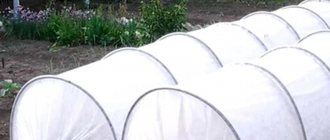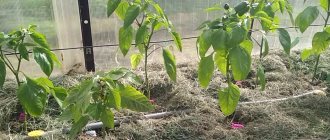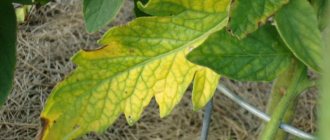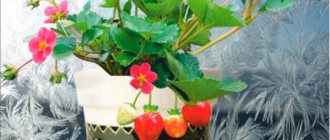A guest from South America, Monstera is a very beautiful decorative vine with large carved leaves. It can often be seen in offices; some people like to grow such a plant in residential premises. There are quite contradictory opinions about the monster. Some consider this plant not only beautiful, but also useful. Others, who believe in omens and superstitions, claim that this plant should not be kept in the house. Some believe that when a monstera is in the house, omens come true, while others grow it and do not observe any negative effects.
Dispelling popular myths
Monstera, an inhabitant of humid subtropics, reaches gigantic sizes in natural conditions. This large vine grows up to 40 meters or more in length, twining around tall trees. Additional long roots grow on its trunks, which can hang all the way to the ground, entwining and growing through everything that gets in their way.
In past centuries, travelers in South America often found monstera thickets in the jungle, next to which lay the skeletons of people and animals, riddled with the roots of these plants. The sight was terrible. In fact, these were the remains of those who accidentally died not far from these thickets, and the roots then grew through everything that came across their path.
But among many peoples there were legends about a dangerous plant that lured travelers and then pierced them with its roots. Since then, monstera (translated as “monster”, “monster”) has retained an ominous mystical reputation. This is the reason why you can’t keep a monstera at home. In fact, this is a very beautiful and rather harmless plant, if you follow some precautions for its maintenance.
Types of Philodendron
The homeland of the plant, which comes from the aroid family, is considered to be the equatorial part of Central and South America. Species diversity is represented by 30 species; only a few of them are adapted for indoor maintenance:
- Monstera tenuis – thin;
- Monstera obliqua – oblique, also unequal-sided;
- Monstera deliciosa – delicacy, also lovely;
- Adanson's Monstera (Monstera adansonii) - pierced or (Monstera pertusa) perforated.
Monstera species and varieties video review:
Currently, selection has given flower growers plants with variegated leaves, but for now, monstera with dark green foliage is more often found in the interior.
Why is the plant dangerous?
Many people grow this beautiful exotic plant in their apartments without any harm to themselves or others. But it has some features that must be taken into account when placing:
- During the day, the monstera releases oxygen, and at night it actively absorbs it. Therefore, it cannot be kept in the bedroom, especially in a small one. In general, this plant is quite large (it grows up to 3-5 meters indoors) and is suitable only for spacious rooms, especially with such properties. It belongs in offices, greenhouses, and large living rooms, where it looks very impressive.
- Whether Monstera is poisonous or not depends on the part of the plant. The juice of its leaves is poisonous (can cause poisoning and irritation of mucous membranes), so it is not recommended to grow it where there are small children or animals. Moreover, with poisonous leaves (if you chew them, you can get poisoned), it has very tasty edible fruits.
- Some esotericists consider the monstera to be an energy vampire, so they do not recommend placing it in the bedroom so as not to feel weak and overwhelmed.
Is it possible for an unmarried woman to keep a monstera at home?
Superstitions and myths floating around monstera say that this plant can destroy a person’s aura and energy protection. As a result, personal life and health are disrupted. Therefore, unmarried girls are not recommended to have a monstera.
It is noteworthy that the monstera is called muzhegon along with ivy, but there is no evidence for this theory, everything is limited to superstition.
In addition, it is worth remembering that in its homeland the philodendron is considered a symbol of the family hearth. The bad reputation around him only extends far from his habitats.
Useful properties of the flower
This flower has much more beneficial properties:
- In practice, it has been proven that this plant absorbs negative energy and can relieve headaches. To do this, you just need to stay a little near her.
- In many southern countries, this plant is considered a strong talisman for the hearth and is often planted near the house. And if you place it next to a sick person, he will quickly recover.
- It is believed that it helps improve thought processes and concentration. Therefore, in institutions it can often be seen in conference rooms and other rooms. Many believe that it creates excellent conditions for business negotiations and has a positive effect on making the right choice.
- According to Feng Shui, Monstera is perceived as a symbol and helps to make important decisions.
- It has been noticed that Monstera is an excellent green filter in the room, effectively purifying the air from dust and harmful impurities. Also, it perfectly suppresses the development of viruses and pathogenic microorganisms. It is good to place it in dry rooms to normalize air humidity.
- Monstera actively absorbs harmful micro- and electric waves and other radiation. Therefore, by placing it next to the refrigerator, microwave, TV or other household appliances, you will significantly reduce their harmful effects on the body.
Folk signs, magical properties, superstitions
Male happiness is a flower that cannot be kept at home
Many lovers of growing flowers associate the plant with the word “monster” and are afraid to place it in their home. There is a superstition that when the philodendron senses negativity, it absorbs it and releases positive energy. And, conversely, in a prosperous environment it will highlight the negative.
Note! In fact, Monstera only absorbs negative energy, just like most indoor flowers.
What other signs are there associated with the flower:
- the plant repels men. The sign is that it prevents a girl who wants to get married from finding a husband, and in an already established family, the effect causes discord in relationships and provokes a rapid cooling of the spouses’ feelings towards each other;
- sucks energy out of people and animals. Monstera can really absorb negative vibes, which is why it is placed near electrical appliances.
Is it worth starting a house?
So, it has much more beneficial properties than harmful ones. Therefore, everyone decides for themselves whether it is possible to keep a monstera flower at home. This plant not only serves as an excellent interior decoration, but can also fill the home with a favorable atmosphere. It is best to keep it in a spacious hallway or living room; some people find a place for it in the kitchen. But it is not recommended to place it in the bedroom or children's room.
If you are distrustful of monstera , then it is better not to have it in your home, because this flower is very sensitive to negativity and will not grow well in such conditions. With careful handling, the monstera can even bloom, although this rarely happens at home. When deciding to have one at home, you should first study its features and how to properly care for it.
Monstera (flower): influence on humans
Is it possible to keep an orchid at home: options why it’s good or bad
Does Monstera have an effect on humans ? This is a question that gardeners have before making a purchase. The plant is considered an energy vampire, which absorbs the good energy of its owners and can negatively affect the aura in the house. In fact, Monstera will only bring benefit and joy to your home.
Myths about the influence on people associated with the flower
Each flower has its own history and legends associated with it. There is a myth that travelers in the rainforests saw the plant feeding on human flesh, after strangling people with its long roots. In fact, the roots could entwine long-dead bodies and skeletons.
Philodendron roots
Note! Many people are afraid to sleep in a room with monstera, knowing about its ability to absorb large amounts of oxygen. The flower will suck out all the oxygen, and the person will not be able to wake up in the morning. Philodendron absorbs only harmful impurities in the air and releases even more pure oxygen.
It is also considered a myth that the plant emits negative energy, which leads to problems in family and personal relationships, careers, failures, etc. It is better for suspicious flower growers not to get a monstera, since they will attribute all their problems to it. The plant will feel a negative attitude towards itself and will not be able to exist in such conditions.
Beliefs about the flower of other peoples
According to Feng Shui, the ancient Chinese science of energy flow, the flower helps to achieve calm, tranquility, and harmony. It will help its owner achieve success at work and career growth. Chinese teachings claim that the plant unites the masculine principle of Yang and the feminine principle of Yin, which reduces the flow of erotic energy. Therefore, monstera is not placed in the bedroom of a married couple.
Among the peoples of Southeast Asia, the plant is a symbol of happiness, health, longevity, good luck, and prosperity. Monstera in the house is specially placed by the bed of a sick person. The pot is also placed at the entrance to the house; it is considered the guardian of the hearth, preventing negative energy from entering the house.
For your information! In Australia and India, questions about whether the plant is poisonous disappear. In these countries, it is eaten with great pleasure and is even specially grown for consumption. The fruits of the flower are considered a particularly delicious dish.
Description of monstera
The monstera liana has another name “philodendron”, which means “amazing”, “bizarre”. Despite its gigantic size in natural conditions, the vine indoors usually grows up to 3 meters, less often up to 5 meters.
It has large, beautiful, carved leaves with numerous holes in the middle. They appeared so that in natural conditions, where there are often heavy tropical downpours, the leaves are not damaged by powerful flows of water. Young shoots have small , heart-shaped leaves without holes.
In the jungle, vines curl around tree trunks. At home, you need to install a support about 1 meter high in a pot, wrapped in sphagnum moss, which must be constantly moistened.
On its stems, upper roots grow in different places, which cannot be removed so that the plant can develop normally. They are quite delicate and must be handled with care and sprayed periodically. When they grow, it is better to dig them in with soil in a pot. But if they are already too large, then separate containers are added for them - pots with soil or jars with water.
How to avoid the consequences predicted in signs.
Yes, indeed, on the Internet you can find various reviews confirming the fact of the negative impact of philodendron on human life. Most likely, this is a banal coincidence, since it is human nature to look for the source of failure in anything but in oneself.
Important! Not a single sign or superstition associated with indoor plants, including monstera, has scientific evidence.
To avoid the consequences predicted in the signs, it is enough to adhere to certain rules.
Advice! If there are animals or small children in the house, it is better to place the pot with philodendron in a place inaccessible to them to eliminate the possibility of them eating the leaves of the vine.
Philodendron leaf sap and microscopic needles can cause skin irritation and damage to the integrity of mucous membranes.
For particularly impressionable individuals and people with a wild imagination, it is not advisable to place a large plant near a place of sleep and rest. The liana will be a wonderful decoration for the kitchen or hallway.
The most important thing is not to try to assign human properties to the plant and identify the plant with an energy vampire.
Tips for proper care
A guest from the tropics loves a humid , warm microclimate, good lighting without direct rays. Capricious - does not like touches and drafts. When the air humidity is high or rainy weather is approaching, droplets of water appear on the leaves - a living barometer in the house.
- Watering. Despite the fact that it loves moisture, too much watering is harmful and can lead to rotting of the roots and falling leaves. It is better to periodically spray the leaves and upper roots with moderate watering. By the way, the leaves should be wiped with a soft sponge to remove dust, but only mature ones - young ones should not be used, as they can be damaged.
- Soil and replanting. Neutral and universal soils are suitable for monstera. Young plants are transplanted into larger pots every spring, and when they grow too large, some of the soil in the pot is only renewed without replanting.
- Reproduction. Young plants are easily grown in many ways: from seeds, stem cuttings, leaves, apical cuttings, aerial roots.
- Pests and diseases. Susceptible to spider mites and scale insects. With improper care (overdrying or waterlogging), the leaves may turn yellow and black.
Monstera at home
Is Monstera poisonous or not?
There is a version that monstera is a poisonous plant. To some extent, this statement is true. The fact is that the fruits and leaves contain a substance that, upon contact with the skin, can provoke the development of an allergic reaction. It usually manifests itself in the form of irritation. If this substance gets on the mucous membranes, serious damage may occur.
It is clear that an adult will not taste any parts of an indoor flower, and therefore the danger of its juice is automatically reduced to zero. However, it is worth remembering that if there are pets in the apartment, they may well chew the leaves. And such a situation is quite capable of causing harm.
The same applies to small children. Babies, as a rule, try to taste the objects around them, without understanding whether they are edible or not. Therefore, it is important to be vigilant.
Where can you keep a flower?
There are other places in the house to place monstera. This vine-like flower reaches several meters in length, so you need to give it a lot of space.
Often a flower is placed at the front door. Many believe that this is how he maintains happiness.
You can also place it in the living room or kitchen. The most important thing is to protect children and animals from consuming flower leaves in order to avoid irritation and allergic reactions.
If the child in the house is very small, the plant should be fenced. You can be sure that it will not indirectly harm anything living in the house. That's what science says.
For reference: monstera propagation occurs by cuttings or cutting off leaves; if desired, you can easily increase the number of bushes.
How to care for monstera at home
The plant is undemanding to temperature and lighting, which allows it to be grown in different parts of the house. It tolerates temperature changes, dryness and air pollution well, and can withstand lack of watering for some time. At the same time, the vine continues to grow, but stops blooming and bearing fruit.
Where to put it in the apartment
The flower is sensitive to movement. It is better to immediately determine the final place for it and not move it unnecessarily in the future. In deep shade, the monstera can die, and the open sun can leave burns on the leaves.
Illumination
The plant loves bright but diffused lighting with light shading. It is important to create conditions that are optimally close to nature in order to preserve the bright color of the leaves. Lack of light leads to a decrease in the size of the leaf plate and diseases of the aerial roots, which has a detrimental effect on the condition of the entire flower.
Temperature
Monstera feels comfortable in a wide range of temperatures: from 16 to 25 degrees. In cool conditions, its growth slows down, and in warm conditions it becomes more intense. In spring and summer, the optimal temperature is from 20 to 25 degrees, in late autumn and winter - 16–18 degrees. Drafts should be avoided. The room thermometer in a room with Monstera should not fall below 10 degrees.
Watering
The intensity of watering depends on the time of year. In spring and summer, the soil should be moistened abundantly immediately after the top layer has dried. In winter, the frequency of watering is reduced, waiting 1–2 days after the substrate dries.
The flower reacts negatively to both drying out of the soil mixture and stagnation of moisture. Overwatering can cause rot on the roots and spots on the leaf blades.
To water the monstera, soft, settled water is used.
Spraying
The plant really loves the procedure of spraying the leaves with a spray bottle. It is advisable to do this once every 1-2 weeks with well-settled water at room temperature. As monstera leaves become dirty, they should be cleaned of dust using a soft, damp cloth.
Fertilizer
The plant develops well even without additional nutrition. However, feeding will only benefit him. Organic and mineral fertilizers are alternated, using once every 2-3 weeks from the second half of spring until the beginning of autumn.
Trimming
After the active growth of the vine slows down, it is recommended to periodically cut off the top to stimulate the development of side shoots.
Bloom
In nature, Monstera blooms annually, but flowering in an apartment is not easy to achieve. With good care and timely application of fertilizers, a couple of years after planting, Monstera can form an inflorescence of small flowers in the shape of a cob, covered with a white blanket with a cream or yellowish tint. Subsequently, a fruit is formed in place of the cob.
Virulence
The juice of the plant is poisonous: it can cause irritation of the skin and inflammation of the mucous membranes. Unripe fruits are especially dangerous - their consumption can lead to gastric and intestinal bleeding, burns of the oral mucosa.
What to do with aerial roots
Aerial roots do not look very aesthetically pleasing, but are necessary for additional nutrition of the plant. They are usually tied to the trunk and covered with moss on top, which must be moistened with each watering.
Monstera in winter
In winter, it is advisable to give the flower a rest. If possible, the temperature in the room where the monstera grows should be reduced to 16–18 degrees, while avoiding drafts, to which the plant is very sensitive. Watering is reduced to 1-2 times a week (a couple of days after the top layer of soil dries). There is no need to feed the vine in winter.
How to make a flower bloom
Outside of nature, Monstera rarely blooms. To achieve this, create conditions as close as possible to the tropical climate:
- bright but diffused light with slight shading;
- abundant watering and spraying;
- air temperature from 20 to 25 degrees;
- a pot of suitable size in depth and width, correctly selected soil;
- preservation of aerial roots.
If all conditions are met, you can expect the inflorescence to appear 2-3 years after planting.
Reality
In fact, the indoor plant secretes phytoncides that destroy pathogenic microorganisms . Today there are many varieties of monstera: compact, variegated, with patterns on the leaves. Most often, gardeners prefer the following types:
- Monstera deliciosa . A classic vine with perforated dark green leaves. A few years after planting, it may begin to bear fruit.
- Monstera oblique . The plant is small in size, unlike other species, has leaves with oblong holes. They may have veins of different shades, which makes the appearance of the vine even more original.
- Monstera is doubtful . The capricious indoor flower has variegated leaves, which is why it is often confused with scindapsus.
Is it possible to keep an exotic vine at home? Monstera? Of course yes. But you should know that it develops quickly, requires large areas and high humidity. Therefore, the plant is suitable for offices and hallways of large organizations.
Carefully! There is no need to place the potty in narrow corridors. The leaves are easily injured by touching; Due to drafts, they may turn yellow and fall off.
Feng Shui
Feng Shui masters recommend keeping this flower in your home or office to balance the energies of Yin and Yang.
They say that next to such a plant it is easier to come to an agreement, reach a compromise and a mutually beneficial solution.
It should not be placed in the nursery and bedroom, but it can be placed in all other rooms.
- In the hallway, the liana will become a real protector - it will eliminate the negativity that penetrates through the front door, ward off thieves, ill-wishers and simply unpleasant people. If you have accumulated worries and negative emotions during the day, she will not let you take it all home.
- If you keep a flower in the living room, mutual understanding and well-being of family members will improve. It will help you recover after a hard day, stress or illness.
- in the kitchen - balances the fire element, neutralizes vibrations from appliances, soot and bad odors. Normalizes digestion and metabolism, encourages moderation in food and a healthy lifestyle.
- In the office - promotes clear thinking, perseverance, concentration, creativity. A person works more efficiently and gets tired less. In addition, the energy of the liana activates cash flows and opens up new opportunities for earning money.
- In the office - eliminates quarrels and misunderstandings in the team, humidifies and ozonates the air, neutralizes magnetic radiation from computers and office equipment, and prevents overvoltage.
Remember: only a healthy plant has beneficial properties, which is why regular care for it is so important.
Possible problems
If the conditions necessary for plant development are not met, problems may arise, including stunted growth, wilting and darkening of leaves.
Why do monstera leaves turn yellow, dry out and fall off?
Lack of nutrients or stagnant soil moisture can cause leaves to turn yellow. If there is a process of premature wilting, most likely it is due to a lack of light or infection with parasites. Leaves can dry out both due to the fault of pests and due to the heat in the room.
Why do monstera leaves turn black?
The leaf blades begin to turn black when overwatered, which results in stagnation of water in the pot. The roots, and then the entire plant, are affected by rot. To stop the process, urgent replacement of the soil, disinfection of the container and pruning of damaged roots will be required. After transplantation, the flower must be watered with a solution of phytosporin. They also treat damaged leaf plates.
Why isn't it growing?
Plant growth stops at temperatures below 19 degrees or lack of light. In addition, the flower may not have enough nutrients for growth due to poor soil or pest damage.











